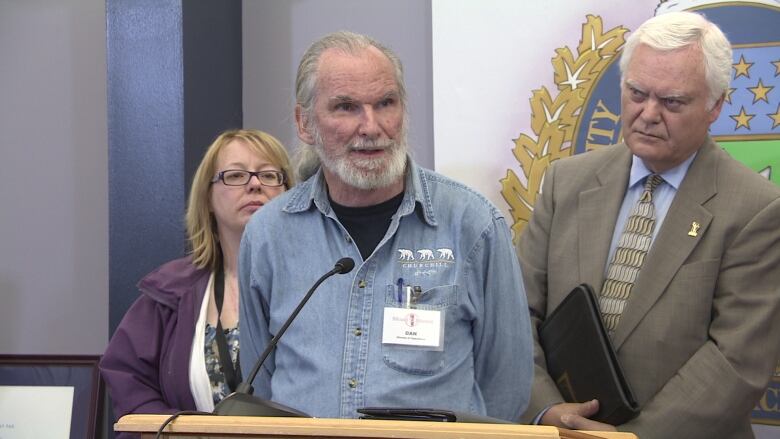Winnipeg shelters not surprised suspect in homeless homicides is homeless, too
'Street census' planned for later in summer to get better picture of homelessness in city

The man accused in the killings of three men, one of whom was homeless, one who spent a lot of time on the streets, and the third who was 'between homes', had himself spent time at the social services agencies in the city that serve the homeless.
Winnipeg police say John Paul Ostamas, 39, had no fixed address and had recently been at Siloam Mission.
Siloam's director of operations, Dan Maxson, says he didn't know that until today, when police announced the charges Ostamas is facing. But he's not surprised.
"Is it difficult when somebody in our community is accused at this point? Accused of violence against another member? Yeah. Of course it's hard," he said.
Maxson says the legacy of residential schools, combined with mental health issues and a lack of social supports for vulnerable people, are adding up.
"People that were taken away to residential school had no parenting models. And now we're surprised they don't know how to parent or they don't know how to do other things? So, it's not just about right now. We need to ask whythese things are happening. And part of it is we, all of us that are sitting here, sitting in our society, have a responsibility, to some extent, for the things that happened today," he said.
Maxson says although Ostama had been part of the homeless community for some time, he doesn't believe he had been staying at the shelter when the homicides were committed, nor does he believe he was there Monday, when he was picked up by police.
Lisa Goss, executive director of Main Street Project, says the situation the accused man and his victims found themselves in is not as far away as some might think.
"I always say everybody is five minutes away from something. So any of us could have that type of trauma that makes us vulnerable, puts us on the street, or makes us behave in ways that we wouldn't normally," she said.
Goss says there's no telling what role being homeless could have played for both the suspect and the victims.
"They're vulnerable individuals. Could be addiction. Could be cycles of trauma, survivors of Indian residential schools, mental health [issues]. There are lots of things that put people in a place where they have no food security or a home.
So those addictions and mental health [issues] sometimes cause us to be altered and do things. Whether or not that was the case, who knows?"
Maxson says social services agencies are looking at making some changes in the wake of the suspected serial killer in the homeless community.
He says the van the Main Street Project used to send out at night to check on people who didn't want to be in shelters may be resurrected.
He also says they are planning to do a 'street census' in late August or September, to better understand what the numbers are.
"I have seen numbers that are so disperse," he said.
The Salvation Army's Booth Centre is also part of the effort to look at improving services for vulnerable people.
Consultant Mark Stewart says it'scrucial for the whole city.
"Whether you are downtown in the work day or you're living down here, I think everybody needs to be safe. It's not just the shelters. As a community we need to come together and come to support each other."












_(720p).jpg)


 OFFICIAL HD MUSIC VIDEO.jpg)
.jpg)



























































































